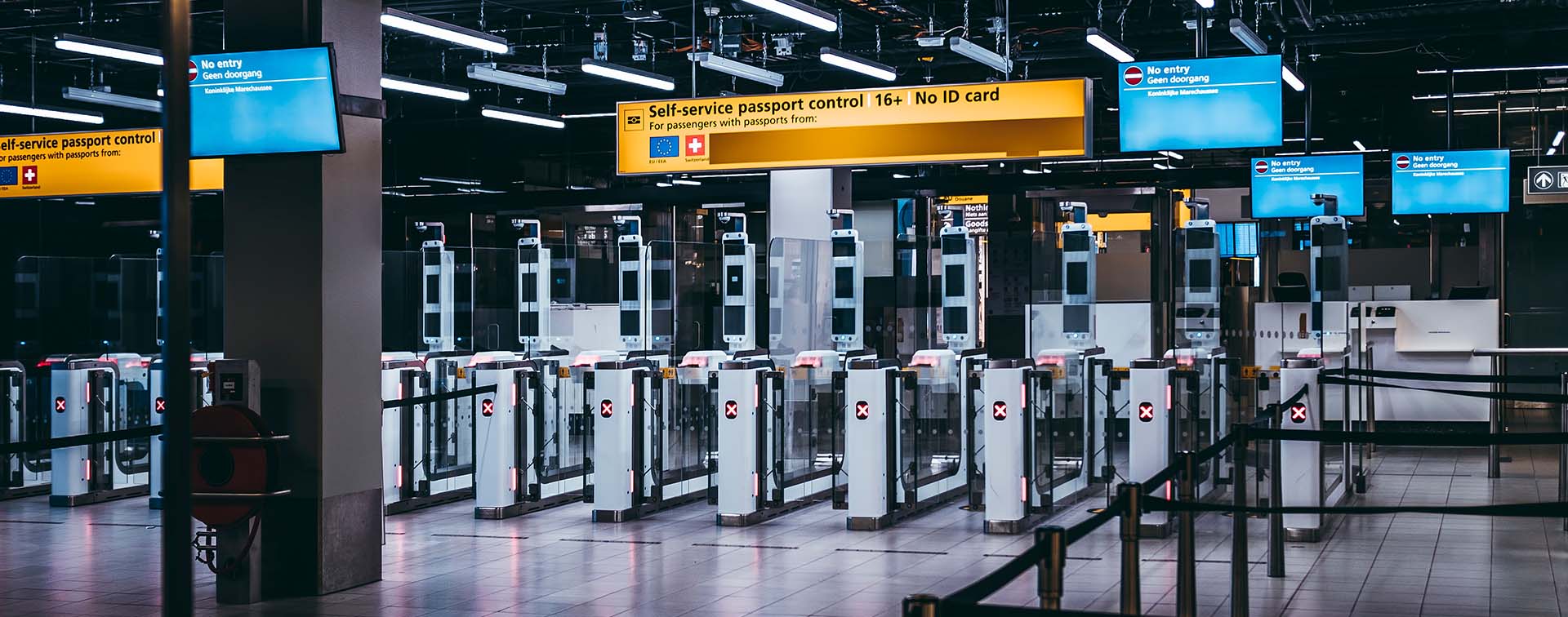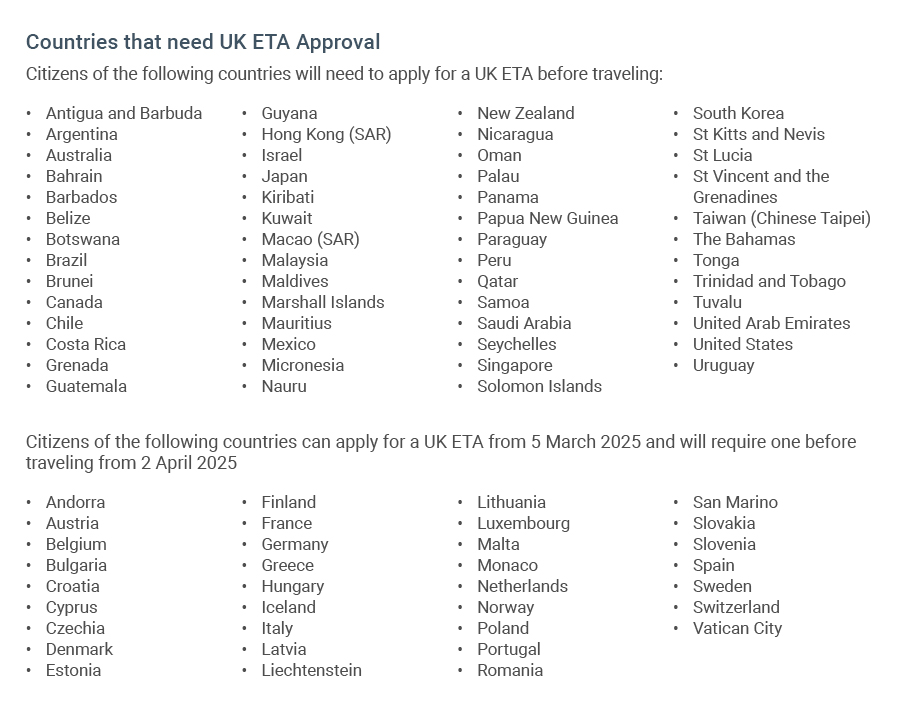The UK recently became the latest country to introduce an Electronic Travel Authorization (ETA) system as part of its border management policy. Billed as a way to enhance security, streamline travel processes, and modernize the management of foreign visitors, the UK’s expanded ETA system, which previously applied to citizens of seven Middle Eastern countries only, reflects the global trend of leveraging technology to facilitate and regulate the millions of people who pass through its borders each year.
An ETA is a digital entry requirement used to screen travelers before they board a flight or arrive at a border. It functions as a form of pre-clearance, ensuring that individuals meet the basic entry criteria before commencing their journey.
Countries are increasingly introducing ETAs to manage, track, and process travelers with passports from countries to which they offer visa-free access. An ETA is typically linked electronically to the traveler’s passport and is valid for a specific period. While it is not a visa, an ETA is mandatory for citizens of eligible countries who wish to travel for business purposes, family visits, short-term study, tourism, or transit.

Commencing 8 January 2025, the UK introduced ETAs for all visitors who do not currently need a visa for short stays of under six months, including Australian, Canadian, and US passport holders. Travelers from Gulf Cooperation Council countries already require an ETA to travel to the UK. Eligible non-Europeans can now apply for an ETA and will need one to enter the UK. Eligible Europeans can apply from 5 March 2025 and will need an ETA to travel to the UK from 2 April 2025.

You do not need an ETA if you have a visa, have permission to live, work, or study in the UK, are a British or Irish citizen, are traveling on a British overseas territories citizen passport, or live in Ireland and are traveling from Guernsey, Ireland, the Isle of Man, or Jersey.
Those who are dual citizens with British or Irish citizenship do not need an ETA but must produce their second passport as proof.
The UK ETA is an advance digital permission to travel to or through the UK. Once fully implemented, it will be required by all travelers who do not need a visa to enter the UK, including babies and children.
This is similar to other systems in place in several countries, including Australia’s Electronic Travel Authority (ETA), Canada’s electronic travel authorization (eTA), and the USA’s Electronic System for Travel Authorization (ESTA). Europe is planning to launch the European Travel Information and Authorisation System (ETIAS) in mid-2025, which will function as an ETA for the entire Schengen Area as well as Cyprus.
The application for the UK ETA can be completed online or through the UK ETA app (which is quicker and may yield a faster decision). Please note that it needs to be completed in one go, as the process cannot be saved, and the service will time out if there is no activity for 20 minutes, and answers will be deleted. Third parties can apply online on your behalf but not using the app.
The following are required:
Successful applicants are granted an ETA valid for multiple entries of stays of six months or less over a two-year period, provided their passport remains valid during this time.
The decision is usually made in a few hours but can take up to three working days and, occasionally, may take longer. Travelers will receive confirmation by e-mail, and the ETA will be linked to the passport they used to apply. If they obtain a new passport, they will have to obtain a new ETA. There is no right to appeal against rejected or refused applications.
The ETA does not grant automatic entry to the UK, and travelers must still go through passport control at borders and show the passport they used to apply for the ETA.
The UK’s decision to implement the ETA system is aimed at improving its border management processes and visitor entry experience.
It allows pre-arrival screening of travelers, identifying potential risks before individuals reach the country’s borders. By requiring travelers to provide detailed information in advance, authorities can proactively address security threats, reducing the likelihood of unauthorized or potentially dangerous entrants.
For travelers and border officials, the ETA simplifies the entry process. Automated systems and electronic verification reduce the need for manual checks, minimizing delays. Travelers with approved ETAs will potentially benefit from faster processing and a more streamlined entry into the UK in the post-Brexit immigration landscape.